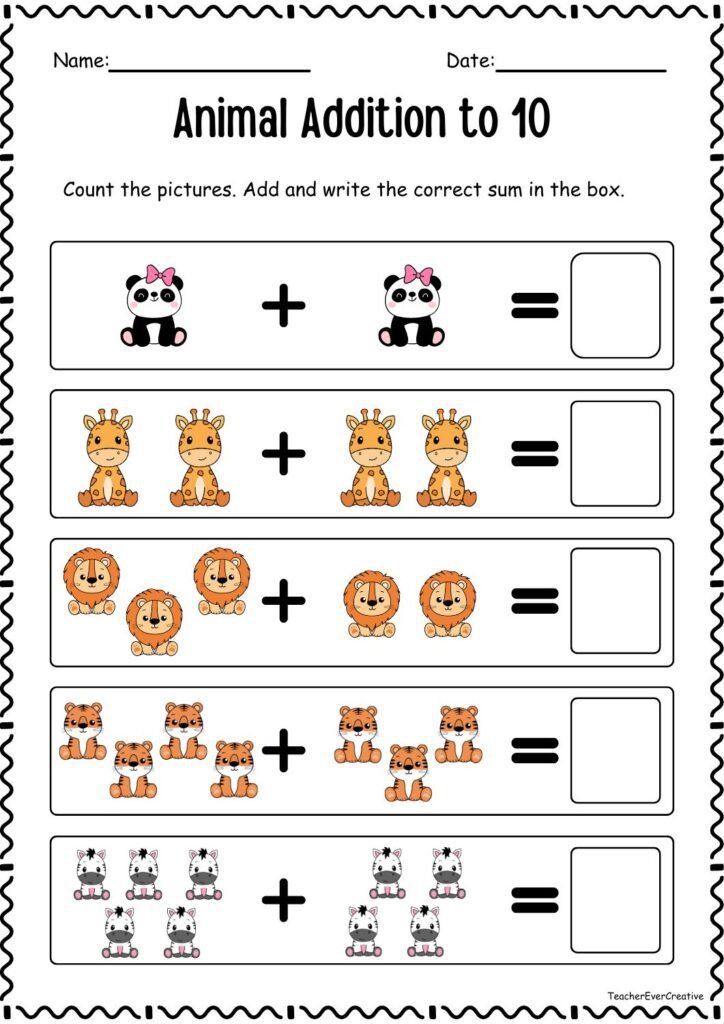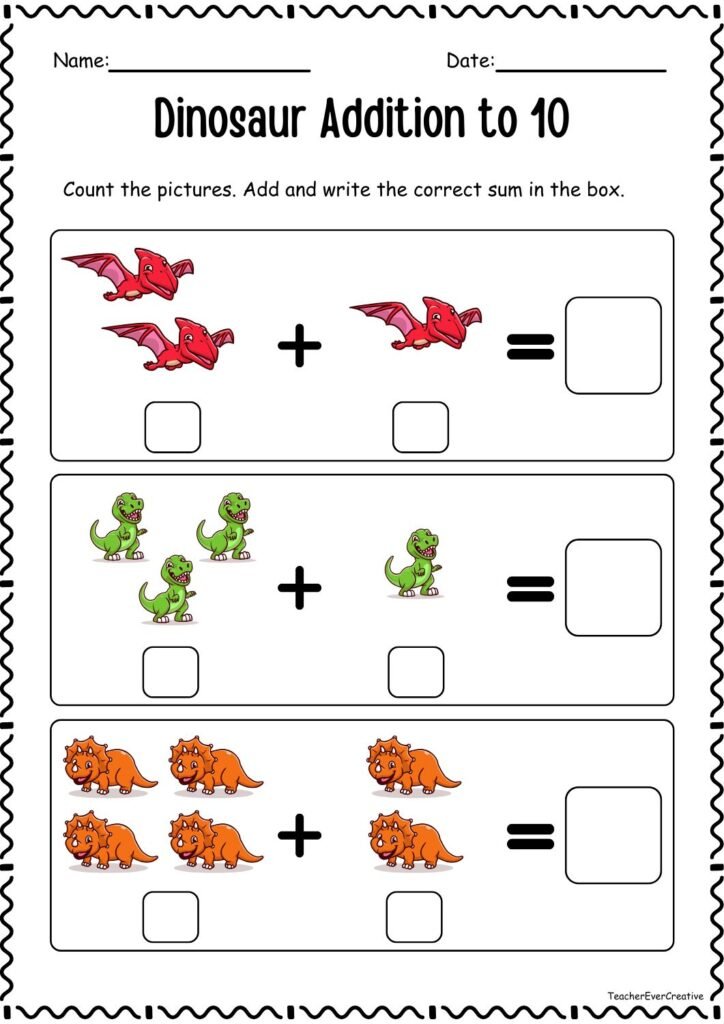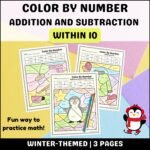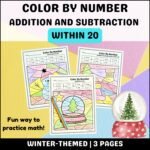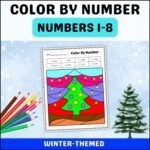Teaching addition to young kids isn’t just about memorizing numbers. It’s about making numbers real. If you’ve ever had a student stare blankly at a math problem, you know what I mean. They need to see it, touch it, count it—not just hear “2 + 3 = 5” and be expected to get it.
That’s why I love using free addition worksheets for kindergarten and grade 1 that come with pictures. When kids count objects, numbers stop being abstract. They become something they can actually understand.
Let’s talk about why visuals matter, how to teach addition without confusion, and of course, you can grab your free addition worksheets here on my TPT store.
Want the full version? Grab it now in my TPT store!
Why Kids Need Visuals for Math
Imagine handing a five-year-old a worksheet with just numbers:
3 + 4 = __
Now, hand them a worksheet with seven apples and ask them to count and add.
Which one do you think makes more sense to them?
Numbers alone can feel invisible to little learners. They need to connect math to real life—things they can touch, see, and count. That’s why using pictures, objects, or manipulatives (like blocks or buttons) is a game-changer.
Repetition is key, too. Math takes practice. A lot of it. The more kids see addition in different ways, the faster it clicks. That’s where a good set of addition up to 10 worksheets comes in handy.
What Makes a Good Addition Worksheet?
Not all worksheets are created equal. Some are so cluttered with decorations that kids don’t know where to look. Others are too plain and don’t give enough visual support.
Here’s what I look for when choosing free addition worksheets for kindergarten and grade 1:
✅ Simple layouts – Clean design, big numbers, and easy-to-follow instructions. SPED students (and honestly, all young learners) need minimal distractions. Sometimes, less is more.
✅ Picture-based addition – Counting objects like stars, apples, or blocks makes it easy for kids to “see” the math.
✅ Clear number progression – Start with small numbers and build up. Jumping from 1+2 straight to 7+9? That’s a recipe for frustration.
How to Teach Addition Without Confusing Your Students
Here’s where things can go wrong. You’ve got the perfect worksheet, but if you don’t introduce addition the right way, kids might still struggle.
Here’s what works in my classroom:
1. Use Real Objects First
Before jumping into worksheets, grab whatever’s nearby—color pencils, erasers, markers. Hold up 5 pencils and say:
“You have 5 pencils on your desk. I give you 2 more. Let’s count how many you have in total.”
Let them count. Let them touch and move the objects. That physical connection matters.
2. Connect It to the Worksheet
Once they’ve counted real objects, show them the worksheet.
“See these pictures? They’re just like the pencils we counted. Let’s count these, too!”
Making that bridge from real objects → pictures → numbers is the key to understanding.
3. Use Clear, Simple Language
I avoid saying “plus” at first. Instead, I say:
🔹 “We’re putting these together. How many in all?”
🔹 “Let’s count everything we have now.”
Once they get the concept, then I introduce words like “plus” and “equals.”
4. Let Them Explain
Instead of just asking for the answer, I ask:
“How did you figure that out?”
This gets them thinking about math instead of just guessing. It also shows me if they really understand or are just repeating what they saw.
Fun Ways to Use These Free Addition Worksheets
These worksheets aren’t just for seatwork. Here’s how to make them even more engaging:
🟢 Math Talks – Before starting, ask: “What do you notice about these pictures? How do you think we add them?” Let kids discuss before jumping in.
🟢 Hands-On Practice – Pair worksheets with real objects. If the worksheet has pictures of apples, hand out actual counters and let them match.
🟢 Partner Work – One student reads the problem, the other solves it. Then they switch. This helps with math vocabulary and confidence.
🟢 Exit Tickets – Give a quick problem from the worksheet before recess. If they get it right, they line up!
🟢 Homework or Extra Practice – Send these home so parents can reinforce learning. No fancy materials needed—just print and go.
Grab Your Free Addition Worksheets!
Want to make addition easier and more fun for your students? These free addition worksheets for kindergarten and grade 1 are perfect for building confidence with numbers.
They’re simple, engaging, and designed for young learners who need that extra visual support.
More Freebies!
Good news! More freebies on addition and subtraction to 10 can be found here.

